Pre-Release Provider System

Ensure that enough providers are available to provide access to required services
Why is this important?
It’s common for both correctional and community providers to deliver pre-release services. However, having community providers on-site presents security and logistical concerns that must be managed to minimize disruption to the correctional environment.
Because large correctional facilities serve larger numbers of individuals who are eligible for pre-release services, when community providers offer these services, the facility may also need greater provider capacity. This can result in obstacles for coordinating care. And although CMS’s reentry guidance identifies “in-reach” pre-release services as the preferred approach, it also recognizes the operational complexities this approach can present.
Pre-release service challenges in smaller jails
Compared to larger facilities, smaller jails may face more challenges in offering a broad range of pre-release services because of their smaller populations. Thirty-four percent of jail jurisdictions have an average daily population (ADP) under 509, and most smaller jails are located in rural areas, which are likely to be service deserts — geographical areas that lack access to services and service providers.
Strategy
For smaller prisons and jails, contract with 1 community provider for each required pre-release service who can handle the projected volume of eligible individuals. This strategy can help to:
- Minimize administrative burden on the correctional facility
- Streamline the coordination required for initiating and scheduling pre-release interactions with community providers
For large correctional facilities requiring a significant number of community-based providers to meet demand, create affiliations among the organizations that could provide pre-release services. Putting these affiliations in place can make it easier to share important clinical information, coordinate care across services, and reduce individuals’ navigational burden. Prisons will also need to identify the communities to which significant numbers of individuals who are released will return, so that providers in those communities can be recruited to provide telehealth pre-release services.
For most correctional facilities, a hybrid model of service delivery — involving both carceral and community providers — may be the most feasible approach for pre-release services.

Jails and prisons should screen for opioid withdrawal and provide withdrawal management
4.1 Screening for and Managing Withdrawal
Why is this important?
Given the risks inherent in withdrawal, correctional facilities should identify individuals who are in withdrawal and then medically supervise the withdrawal process.
Because correctional facilities conduct booking 24 hours per day, screening for OUD and the risk or presence of withdrawal symptoms must be available around the clock.
Strategy
Jails should screen for OUD and withdrawal risk during intake. Prisons may consider screening for withdrawal risk periodically, especially at the beginning of the 90-day Medicaid reentry period, given the high rates of overdoses in correctional facilities.
Jails and prisons should:
- Develop screening protocols in which trained health care staff or trained correctional officers identify serious withdrawal symptoms and transfer affected individuals to the nearest hospital or urgent care center.
- Use a brief, standardized screening instrument like the Rapid Opioid Dependence Screen (RODS) to identify individuals with OUD. RODS includes 8 items, has been assessed in correctional settings, and can be administered in several minutes by a non-clinician.11
- Use the Clinical Opiate Withdrawal Scale (COWS) to assess the severity of withdrawal.
- Ensure that withdrawal management for OUD, if offered, is provided under medical supervision and managed with methadone or buprenorphine according to the American Society of Addiction Medicine’s guidelines.12
Staffing and resource considerations
In February 2022, the Bureau of Justice Assistance advised jails to consider the following in establishing staffing and resources for withdrawal management:- “Designate a ‘responsible health care authority’ who arranges and coordinates all health services.
- Provide adequate medical coverage for assessment and treatment planning.
- Clinical support can be accomplished through any combination of on-site health staff, remote coverage, telemedicine, and transfer to facilities that can provide a higher level of care.
- Clarify responsibilities so that staff understand the limits of their roles.
- Review contracts with medical and behavioral health services for withdrawal management practices.”13
- Example #1
- Example #2
- Example #3
Example #1: Delaware
Delaware’s Department of Corrections has a comprehensive policy that requires staff to be trained on recognizing OUD and includes specific guidelines for observing individuals in withdrawal and providing medical supervision of the process.
Read: Policy F-04: Medically Assisted Withdrawal and Treatment
Example #2: Philadelphia, Pennsylvania
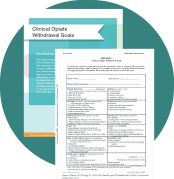
Explore: The Complexity and Strengths of the Department of Prisons’ Program to Prevent Overdoses
Example #3: Washington
According to a survey of 47 of Washington’s 57 jails, almost all jails screen for opioid withdrawal at booking. This screening is most commonly done by correctional officers or nurses using the COWS.
Additionally, in Washington jails, individuals are most commonly monitored for opioid withdrawal by either health care staff or correctional officers. Two-thirds of jails use buprenorphine for opioid withdrawal management: 20% initiate buprenorphine, and the remainder start a buprenorphine taper or implement a combination of buprenorphine initiation and taper.
Read: The Status of Medications for Opioid Use Disorder (MOUD) Provision in Washington State Jails, 2021
4.2 Telehealth
Why is this important?
Telehealth can play an important role in delivering quality health care in correctional systems. Benefits include15:- Reduced wait time for medical referrals
- More access to outpatient services
- No need for transportation to appointments
- Lower costs for transportation, security and personnel
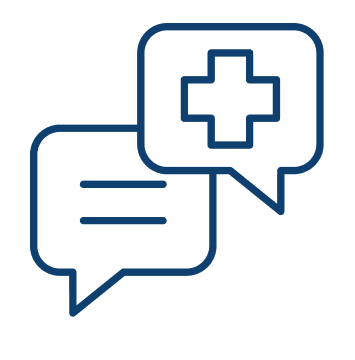
Strategy
Correctional facilities can:
- Maximize the use of telehealth, as feasible. In small, rural jails with limited availability of either MAT or case management providers, telehealth could be considered the standard of care.
- Create structural changes to facilitate reentry activities, like adding interview spaces at intake and spaces for individuals to receive services and meet with post-release care managers, in person or via telehealth.
- Provide telehealth tablets for individuals’ use. Connect the tablets to closed systems to protect security and enhance access to community providers.
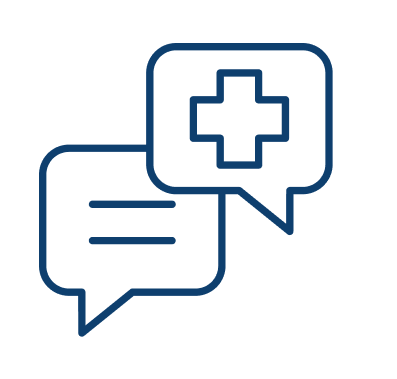
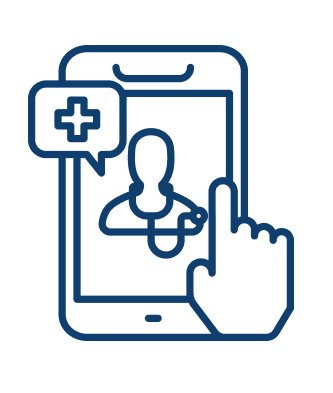
- Example #1
- Example #2
Example #1: New Hampshire
New Hampshire will make infrastructure improvements to facilitate access to community health care providers via telehealth. Future plans will further increase access by procuring new telehealth pod structures (spaces where individuals can access telehealth care in private).
Browse: New Hampshire Reentry Implementation Plan, page 2
Example #2: Washington
Washington is extending Wi-Fi coverage by installing telehealth pods for patient privacy in correctional living units. The pods will be equipped with secure tablets to provide telehealth access. This investment will minimize the need to escort individuals to other parts of the facility.17

Ensure pre-release plans are person centered and aligned with CMS reentry guidance
4.3 Case Management
Why is this important?
Pre-release case management providers should become familiar with the case management expectations established in CMS’s April 2023 Reentry Guidance. This is especially important for correctional case managers who may have previously provided this service in ways that aren’t fully consistent with CMS’s guidance.
Strategy
Correctional facilities can:
- Develop requirements for pre-release case management that reflect CMS’s guidance—and the 4 functions of case management:
- Assessment
- Planning
- Referral and linkage
- Monitoring and coordination
- Provide in-reach pre-release services through managed care organizations (MCOs) or community providers to establish care connections
- Require MCOs to provide pre-release care management for individuals with extensive health needs and to identify a specific care manager to ensure that individuals have immediate appointments and access to services post-release
- Example #1
- Example #2
Example #1: New Hampshire
In New Hampshire, eligible individuals are enrolled in MCOs during the pre-release period. The MCOs initiate care management activities, including creating a person-centered plan for each individual. Then, the pre-release case manager schedules a warm introduction with the post-release case manager and the individual during the first week of their reentry participation (90 days before release).
Browse: New Hampshire Reentry Implementation Plan, page 4
Example #2: Massachussetts
Through the MassHealth Behavioral Health Supports for Justice Involved Individuals program, navigators:
- Work with individuals pre-release to develop personalized support plans
- Provide intensive supports post-release, including daily contacts for the first month and 24/7 on-call support as needed
Access: MassHealth Behavioral Health Supports for Justice Involved Individuals (BH-JI)

Offer MOUD to all individuals with an OUD at least 90 days before reentry
4.4 MAT with Buprenorphine and Naltrexone
Why is this important?
Most prisons and jails don’t offer buprenorphine and naltrexone or only provide limited forms of these medications.18 In a recent report, 44% of jails offered MOUD to at least some individuals, and just 13% offered these medications to anyone with an OUD who requested them.Strategy
The process for deciding which MOUDs to initially offer involves first identifying the MAT provider’s location and what MOUDs are available in that location, so the facility can ensure that pre-release medications will be available post-release. For prisons, their referral system of OUD organizations may include providers who are located some distance from the facility since most individuals released from incarceration return to their home communities, which may be 100 miles or more from the prison.
Correctional facilities may consider using a hybrid mix of practitioners to provide MAT, including carceral staff, staff of the carceral health care vendor, county or state health departments, and community prescribers.
If correctional facilities can’t meet the need for MOUD using existing health care staff or vendors, they and SMAs will need to identify community-based providers to provide MAT services within the facility. Community-based providers include community health centers (CHCs), medical practices, office-based opioid treatment providers, and individual medical practitioners, like medical doctors (MDs), advanced practice registered nurses (APRNs), nurse practitioners (NPs), and physician assistants (PAs).
- Example #1
- Example #2
Example #1: Boston, Massachussetts
Boston Medical Center’s Office-Based Addiction Treatment program works in partnership with the South Bay House of Corrections, providing in-facility presentations on the center’s services. For those interested in office-based addiction treatment, center staff meet with them individually, establish a relationship, and make direct linkages at release. The center’s clinic also prioritizes post-release walk-ins during all clinic hours.
Check out: New Approaches to Disseminating Treatment: Technology, Low Barrier MAT and Prison Health, slides 20–23
Example #2: Maine
In Maine’s prisons and juvenile facilities, 2 providers of pre-release linkage services are responsible for facilitating access to post-release MAT, either by providing it directly (Groups Recover Together) or through referral arrangements (Day One).
Learn more: Medication Assisted Treatment Services First Year Review
4.5 MAT with Methadone
Why is this important?
Regulatory restrictions on methadone delivery by OTPs create significant barriers to access. Given the high prevalence of OUDs in correctional facilities and the presence of fentanyl in the drug supply, methadone should be available as soon as possible to individuals who are incarcerated. It should also be noted that compared to buprenorphine and naltrexone, methadone is associated with less opioid use, lower mortality and criminality, and improved quality of life.20
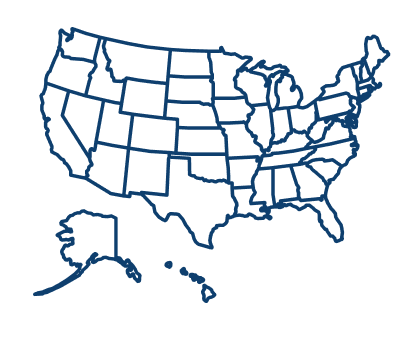
Strategy
SMAs can begin discussions with the Single State Agency (SSA, the state agency responsible for SUDs) and the State Opioid Treatment Authority (SOTA, which is responsible for overseeing OTPs) to develop a plan to make methadone available in correctional facilities. As part of this planning, the state should evaluate all possible methadone delivery models to determine which one(s) could offer facilities an opportunity to provide access to methadone.
For most correctional facilities, the most feasible models may include:
- Registering with the DEA as a hospital or clinic
- Transporting methadone from a certified OTP
- Operating a medication unit under the auspice of a certified OTP
- Having a certified OTP provide services onsite
Medication units are an underutilized option for expanding the reach of methadone treatment, both for rural areas in general and correctional facilities in particular. Locating medication units in CHCs — which have broad distribution across the United States and are, therefore, likely located near to correctional facilities — can significantly expand access to methadone.
The SSA, with its SOTA, could also create prototype models for accessing methadone for specific types of facilities, like small rural jails, large county or urban jails, or prisons.
Medications for the Treatment of Opioid Use Disorders rule
Using the new flexibilities available through the April 2024 Medications for the Treatment of Opioid Use Disorders rule can assist correctional facilities in providing access to methadone. Specifically:
- The pre-admission screening examination may be conducted outside of an OTP and by a licensed practitioner who isn’t an OTP practitioner
- A non-OTP practitioner may complete a full examination of the individual’s health status Both the screening and full examination may be completed via telehealth
- Updated stability criteria and expanded time-in-treatment parameters allow for greater access to take-home dosing
- Example #1
- Example #2
- Example #3
- Example #4
- Example #5
- Example #6
- Example #7
Example #1: Arizona
In Arizona, Community Medical Services, a private OTP provider, supports methadone treatment for over 7,000 individuals who were previously enrolled in a community OTP and who are incarcerated in Maricopa County jails. Community Medical Services also provides methadone for the duration of individuals’ jail stays in Pima, Yuma, Mohave, and Santa Cruz counties.
Explore: Access to Medications for Opioid Use Disorder in U.S. Jails and Prisons: Litigation, Legislation, and Policies, page 5
Example #2: Washington
Washington has established a process to allow correctional facilities to20:
- Work with external OTPs
- Have a medication unit on site
- Register as a hospital or clinic and provide methadone
Example #3: New Mexico
Recovery Services of New Mexico (now MedMark Treatment Centers), a certified OTP, provides methadone in New Mexico’s Bernalillo County Detention Center.
Read: A Review of Medication Assisted Treatment (MAT) in United States Jails and Prisons
Example #4: Allegheny County, Pennsylvania
Allegheny County contracts with Pittsburgh Comprehensive Treatment Center, a certified OTP, to manage its methadone treatment unit. This unit also connects patients with a community provider upon release from the jail and refers individuals to the county’s Department of Human Services for reentry and peer-support services.
Access: Allegheny County Expands Jail’s Opioid Use Disorder Treatment Program
Example #5: Clark County, Washington
The Clark County Sheriff’s Office provides methadone as a “satellite site” of Acadia Healthcare, a licensed OTP.
Learn more: Medications for Opioid Use Disorder (MOUD) In Jails Program, page 5
Example #6: Pierce County, Washington
Pierce County Alliance, a SUD treatment organization, administers the MOUD program at the Pierce County Jail and partners with the Tacoma/Pier County Health Department to provide courtesy methadone dosing. All other jail medical services are provided by a correctional health vendor.
Explore: Providing Medication to Treat Opioid Use Disorder in Washington State Jails, pages 10–12
Example #7: Franklin County, Massachusetts
The Franklin County Sheriff’s Office provides all 3 MOUDs and is a licensed OTP. During the COVID-19 pandemic, the office began administering MOUDs in housing units and then pivoted to using telehealth. Essential case workers and clinical staff placed individuals in front of a designated telehealth computer to engage with sheriff’s office case workers or clinicians working from home and community addiction treatment partner agencies. Smart TVs and tablets also connected individuals with community partners pre-release, and the office uses technology to complete community pre-release assessments and provide warm handoffs at release.
Check out: COVID-19 and Treating Incarcerated Populations for Opioid Use Disorder
4.6 MAT with All MOUDs
Why is this important?
For many correctional facilities, MAT is a new addition to their health care services. Creating the facility’s model for MOUD provision may require new types of arrangements with correctional health care vendors and community providers.
Strategy
Correctional facilities can assess the ability of health care vendors and community providers to provide some or all MOUDs and create delivery models that maximize the facility’s ability to provide MAT.
- Example #1
- Example #2
- Example #3
- Example #4
Example #1: Franklin County, Ohio
The Franklin County Corrections Center relies on:
- Community Medical Services to provide methadone
- NaphCare to provide buprenorphine prescriptions
Read: Access to Medications for Opioid Use Disorder in U.S. Jails and Prisons: Litigation, Legislation, and Policies, page 16
Example #2: New Hampshire
New Hampshire has identified 5 counties that contract with the same medical provider. The state has begun to work with this vendor to form a partnership for enhanced MAT service delivery.
Access: New Hampshire Reentry Implementation Plan, page 4
Example #3: Maine
Maine began making MOUD universally accessible among resident populations in all jails, prisons, and juvenile facilities in November 2021. For prisons and juvenile facilities, in-facility MAT is provided by Wellpath. Pre-release linkages are provided by Groups Recover Together, an opioid treatment provider throughout Maine, and Day One, a substance use and mental health provider in southern Maine.
Learn more: Medication Assisted Treatment Services First Year Review
Example #4: Philadelphia, Pennsylvania
The Philadelphia Department of Prisons has provided MAT in all city jails for over 12 years. Specifically, methadone is provided through a partnership with a community provider, while the jails provide Suboxone® (buprenorphine and naloxone) and Vivitrol® (extended-release naltrexone).
Browse: Use of Medication-Assisted Treatment for Opioid Use Disorder in Criminal Justice Settings, page 44
4.7 MAT with Naloxone
Why is this important?
Given the risk of in-facility overdose events and deaths, naloxone should be part of facilities’ MAT programs. The National Institutes of Health’s HEALing Communities Study identified an evidence-based practice — overdose education and naloxone distribution22 — that can reduce the risk of overdose deaths both in correctional facilities and post-release.
Strategy
Using the overdose education and naloxone distribution framework, correctional facilities should make naloxone available through a variety of methods, including:
- Issuing Narcan® (naloxone) to correctional officers to carry while on duty
- Placing Narcan® supplies throughout facilities in locations that staff and individuals can access
- Distributing Narcan® directly to all individuals who are receiving MAT
- Example #1
- Example #2
- Example #3
- Example #4
Example #1: Michigan and Cook County, Illinois
Jails in Michigan and the Cook County Jail in Illinois provide naloxone free of charge through vending machines in their lobbies.
Learn more:
Example #2: California and Cook County, Illinois
In California prisons and the Cook County Jail in Illinois, pre-release planning includes distributing naloxone kits and training on administering the medication.
Explore:
Example #3: Philadelphia,
Through the Philadelphia Department of Prisons, all correctional officers are trained to use naloxone — and they carry naloxone and administer it throughout the jail when necessary. What’s more, naloxone is available throughout jail facilities, so health care staff have quick access to it.
Example #4: Maine
In Maine prisons, the Department of Corrections provides naloxone kits and hands-on education on responding to an overdose. Each kit also contains an educational resource on overdose response for family and friends.
Check out: Medication Assisted Treatment Services First Year Review, page 2
References
9 Jail inmates in 2022 – Statistical tables. U.S. Department of Justice, Office of Justice Programs.
11 MAT or MOUD in correctional settings: Considerations for implementation. Opioid Response Network Summit, Providence, RI.
12 The ASAM national practice guideline for the treatment of opioid use disorder: 2020 focused update.
13 Managing substance withdrawal in jails: A legal brief.
16 MAT access up 66% in community health centers. Behavioral Health Business.
17 L. Flynn (personal communication, February 21, 2025)
21 https://oig.hhs.gov/reports/all/2024/medicare-and-medicaid-enrollees-in-many-high-need-areas-may-lack-access-to-medications-for-opioid-use-disorder/